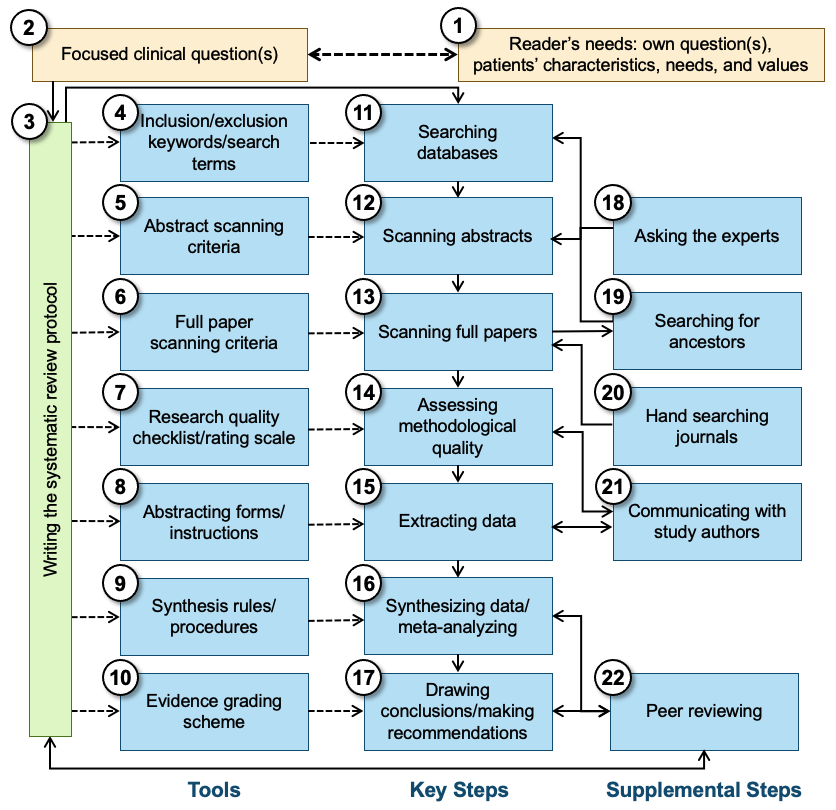How to Use the AQASR
Following an introduction that relies on a flowchart (see Figure 1) to lay out the typical process of conducting a systematic review, this document offers a list of questions that systematic review users should ask themselves. For each question, there is a list of the type of information to look for in answering it and an explanation of why the question is important (termed rationale). The AQASR checklist is a separate document that lists the same questions (without the items to look for and the rationale) and gives the user space to note their observations on a particular systematic review.
A core set of questions can be asked of every systematic review, whether it deals with prevention studies or economic evaluation of treatment studies. Not all questions in these sections are relevant to all systematic reviews. This document covers questions relevant only to meta-analysis, a genre of systematic review that attempts to provide a quantitative synthesis of the literature. These questions are presented in the following sections:
- Systematic review question/clinical applicability (RQ)
- Protocol (PR)
- Database searching (DB)
- Other searches (OS)
- Search limitations (SL)
- Abstract and full paper scanning (SC)
- Methodological quality assessment and use (MQ)
- Data extracting (DA)
- Qualitative synthesis (QS)
- Discussion (DI)
- Various (VA)
- Meta-analysis (MA)
The following sections of the AQASR checklist provide questions for five types of systematic reviews that the Task Force identified as most salient to rehabilitation decision makers, including:
- intervention studies, including all treatments and preventive measures (IN)
- prognostic studies (PS)
- diagnostic accuracy studies (DS)
- studies of the quality of measurement instruments (MI)
- economic evaluations (EC)
- Last Updated:

